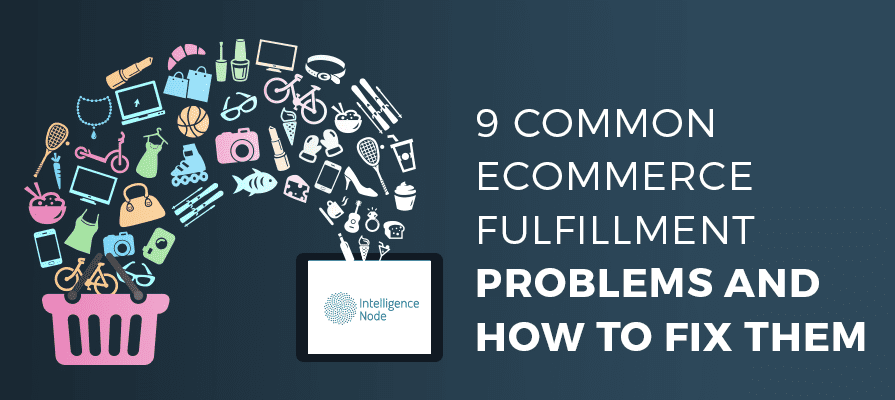Want to infuriate your customers, destroy your reputation, and lose money? Of course you don’t. Ecommerce fulfillment problems are one of the fastest — and most common — routes to lost business, particularly among large brands with massive inventories. So what are the most common glitches? And how can you fix them?
Locating Inventory
When customers order a product, you need to be able to easily locate or order the item. If your warehouse is poorly organized or your communication with suppliers is delayed or poor, you’ll have trouble locating inventory. That translates into shipping delays. There is perhaps nothing more frustrating to customers than delayed shipping, particularly if they pay a premium for expedited delivery.
To avoid this, maintain real-time data on your inventory, and hire warehouse workers you can trust. The faster you locate your inventory, the faster your inventory will be delivered. That improves your likelihood of turning a one-time customer into a customer for life.
Damaged or Incorrect Inventory
When a customer waits days or weeks for a much-coveted product, receiving the wrong item or a damaged item can be infuriating. Some businesses knowingly send out slightly damaged inventory in the hopes a customer won’t notice — a book with a creased cover, a binder with loose rings, a lipstick tube with a scratch. Rest assured, they notice.
When customers receive the wrong item or a damaged item, it costs you money to replace the product. Worse still, the consumer might think twice about ordering from you again. Proper inventory management on the front end can prevent many of these issues. House your inventory safely, and ensure it is double-checked before sending. Invest in quality packaging, and always pay for insurance.
International Shipping
International shipping can take anywhere from a week to several months. While international buyers do not expect to get their products overnight, they will look elsewhere if they have to wait too long. Offer a range of shipping options to your international buyers. You might be surprised to learn that many are willing to pay a significant premium to get their products sooner. You may also want to consider negotiating a bulk international shipping rate if you do a large volume of international business.
Shipping Notifications
Shipping notifications can seem like such a small thing, particularly if the package is scheduled to arrive in a day or two. But customers are trained to expect them. Many stalk their packages, checking their location several times per day. Because most retailers offer shipping notifications, your customers probably expect them. If they don’t receive a notification, they may think the package hasn’t shipped. That means needless calls to customer service, wasted time, and wasted money.
Shipping Costs
Retailers struggle with two distinct shipping-related costs: determining how much to charge for shipping, and keeping shipping costs reasonable. The simplest way to set shipping costs is to do so by weight. If you don’t want to or can’t do that, consider establishing shipping costs based on price. Customers expect to pay more when they buy more, so are less likely to balk at a slightly higher shipping fee.
Inadequate Customer Service
Where do customers go when items are missing, delayed, or damaged? Customer service, obviously. Inadequate customer service may be the worst fulfillment mistake you make. If your customer service representatives cannot quickly and competently respond to customer concerns, why bother even hiring them? You might as well light your money on fire. Invest in quality customer service representatives, even if it costs a little more. They’ll be better equipped to manage fulfillment issues, and you’ll have fewer angry customers on your hands.
Poor Inventory Management
There is nothing more frustrating to customers than purchasing an item only to learn that they can’t have it — or that they have to wait. Without diligent inventory management, you’ll sell out of items before you realize it, forcing you to issue refunds and incentives to disappointed customers. Create an inventory management strategy to keep track of each and every item, then ensure it automatically updates your shop. If there’s a chance an item won’t be available, or you know it’s already on backorder, clearly notify customers of this fact in the listing.
Replacing Lost or Damaged Products
No matter how diligently you manage your inventory or your store, some products will be lost or damaged. Replacing those items can be costly, so consider purchasing shipping insurance for each and every item. Don’t charge customers for returned merchandise, either, or you’ll have a bevy of irate consumers on your hand. Instead, offer them a free return envelope and pre-printed label for easy returns. Make the return process easy and you’ll turn a mistake into a good experience that creates a loyal customer.
Communicating With Suppliers
When you buy from third parties, as most retailers do, good communication with your suppliers is vital to a successful business. Work only with suppliers who offer rapid communication and quality service. Otherwise you’ll end up paying for their mistakes.





